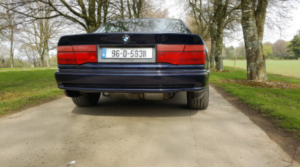I want a powerful EV Conversion
If you’re building an EV conversion for performance, then here are some of the things you should consider.
Donor Car
Clearly the size and weight of your donor car will have a massive impact on your choice of other components. A small, lightweight car will need less power to achieve significant performance, and may not have the structural strength to support a very large drive unit or the torque it produces. Plus, the weight of batteries required to deliver performance over any sensible range may make the car unsafe or unwieldy.
Conversely, a larger, heavier vehicle may require a larger drive unit to deliver serious performance. But this might require a lot more fabrication than fitting a smaller drive unit - especially if, as with the Tesla units, you’re installing it in place of a rear diff or transaxle.
Donor part suitability
Performance electric motors deliver a lot of torque - much more than the donor car may have been designed to cope with. If you’re swapping in an electric motor, consider upgrading not just the car’s structure, but also the other parts of the drivetrain. Gearboxes, drive shafts, differentials etc. All of this will need to be factored in to the cost of the conversion.
Motor options
Performance motor options go beyond the Tesla drivetrain. For example, a Nissan leaf motor can be capable of over 140kw - plenty of power for smaller applications. The Lexus CVT units offer over 200kw at appropriate voltages.
Consider what will be the most appropriate fit for your vehicle. If it’s rear-wheel drive, Tesla units are an option but you could also use the Lexus CVT units mounted in place of the gearbox. Front-wheel drive, Tesla units are again an option but you could look at the Lexus RX450h transaxle.
Consider whether your application needs higher peak power or higher continuous power. The original tesla large drive units have a very high peak power, ie they can deliver 500-600hp momentarily. great for 0-60 times. But for racing, a motor with higher continuous power rating would be more appropriate, such as that from the Model 3.
- Tesla Model 3 Rear Drive Unit,
- Tesla Model 3 Front Drive Unit
- Tesla Inverter FAQ
- Nissan leaf motor (140kw, 160kw)
- Lexus GS450h
- Lexus GS300h
Batteries
High performance will usually mean higher current draw. That means you will need batteries with higher power density, which doesn’t always equate to higher energy density (which is what offers greater range).
Hybrid batteries often have higher power density, as well as being smaller and lighter than full-sized packs, making them good options for performance applications.
- Tesla Model 3 Battery
- Chevy Volt battery
- Pacifica Hybrid modules
Ancillaries
Depending on your application, you may choose to leave out some ancillaries. Lightweight race cars may not need power steering, and you may even be able to leave out the charger and DC-DC converter.
If you are looking for a cheap ev conversion check the sister page.

